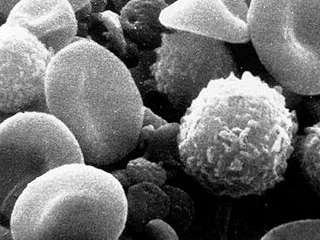16. Mitosis is probably the most exciting part of the eukaryotic cell cycle, but it doesn't take up a very long time in the life of a cell. What's the name of the longest phase of the cell cycle?
From Quiz Cycling Through Life
Answer:
Interphase
The name - "interphase" - implies that this process isn't very important; it's just what comes between cytokinesis (the two daughter cells splitting apart) and mitosis (the creation of two daughter nuclei right before cytokinesis). But this is misleading: interphase is tremendously important. It's divided into three further stages. First comes Gap 1 (another misleading name), in which the cell synthesizes proteins, performs its normal functions, builds more organelles, and grows in size. The second stage is Synthesis, in which the cell copies its genetic material in preparation for mitosis, but leaves the two genomes in its own cell nucleus. Interphase ends in Gap 2, another growth period immediately before mitosis. The length of these stages varies greatly depending on the organism and system of the cell, but a typical human cell spends around 90% of its life in interphase.
Prophase, anaphase, and telophase are all stages of mitosis.
 You've read about cellular biology, but can you identify cells and structures from electron microscope images? In fifteen minutes, you'll know if you take this quiz. I'll give you some hints, too!
You've read about cellular biology, but can you identify cells and structures from electron microscope images? In fifteen minutes, you'll know if you take this quiz. I'll give you some hints, too!  You've read about cellular biology, but can you identify cells and structures from electron microscope images? In fifteen minutes, you'll know if you take this quiz. I'll give you some hints, too!
You've read about cellular biology, but can you identify cells and structures from electron microscope images? In fifteen minutes, you'll know if you take this quiz. I'll give you some hints, too!  Quick Question
Quick Question = Top 5% Rated Quiz,
= Top 5% Rated Quiz,
 Top 10% Rated Quiz,
Top 10% Rated Quiz,
 Top 20% Rated Quiz,
Top 20% Rated Quiz,
 A Well Rated Quiz
A Well Rated Quiz